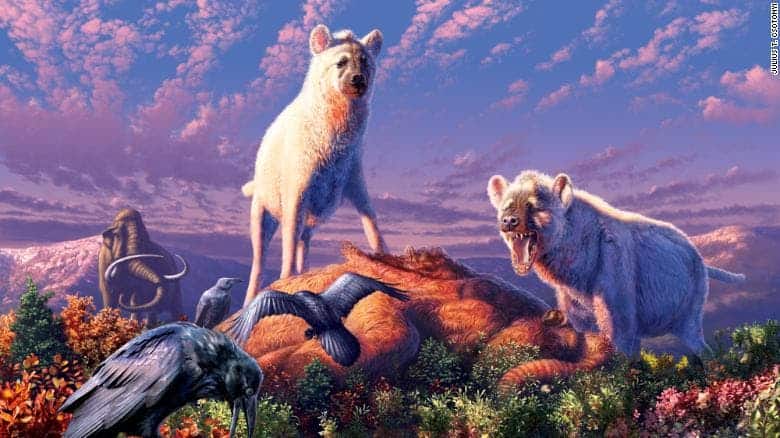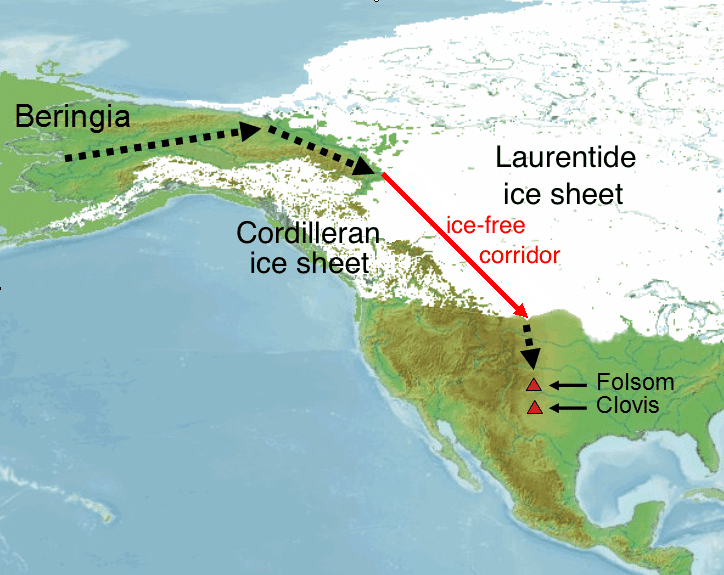Ice age hyenas may have hunted caribou and horses around the Arctic area or scavenged carcasses in the cold tundra, a study of two enigmatic teeth suggests.

Lions and tigers usually take all the admiration, but you could hardly imagine a more robust and adaptable predator than the hyena. Hyenas outnumber lions and use their larger populations and social skills to compete with even predators such as lions.
Nowadays, hyenas roam Asian and African savanna ecosystems, but researchers suspect that they can adapt to almost any habitat from grasslands and savannas to woodlands, sub-deserts, and even mountains. Back in the day, they may have spread even farther, going as far as the Arctic.
The key to this finding are two Ice Age teeth, which paleontologists think belonged to an ancient hyena species — Chasmaporthetes, the “running hyena.”
Now, as if hyenas weren’t impressive enough, this finding also helps explain one of the mysteries about how hyenas achieved to their current geographical spread. Previously, Chasmaporthetes fossils had been found as far north as Mongolia in Asia and the southern United States in North America, with no sites in between.
“Fossils of this genus of hyenas had been found in Africa, Europe and Asia, and also in the southern United States. But where and how did these animals get to North America? The teeth we studied, even though they were just two teeth, start to answer those questions,” says paleontologist Jack Tseng, PhD, the paper’s first author and an assistant professor of pathology and anatomical sciences in the Jacobs School of Medicine and Biomedical Sciences at UB.

The new findings seem to suggest that hyenas crossed through Beringia, the area which, in periods of low sea level, connects Asia to North America in places like Alaska and Yukon. From there, they moved south as far as Mexico. But their ability to pass through this area shows incredible hyena resilience, researchers say.
“It is amazing to imagine hyenas thriving in the harsh conditions above the Arctic Circle during the ice age,” says study co-author Grant Zazula, PhD, Government of Yukon paleontologist. “Chasmaporthetes probably hunted herds of ice age caribou and horses or scavenged carcasses of mammoths on the vast steppe-tundra that stretched from Siberia to Yukon Territory.”
The teeth were dated to between 1.4 million and 850,000 years old, but these aren’t the first hyenas to make the journey — the earliest known hyena fossils on the American continent date to about 5 million years ago.
The teeth were actually discovered earlier, during a 1970s expedition in the northern Yukon Territory, and it drew Tseng’s attention a couple of years ago. An expert in hyena paleontology, he identified it as belonging to the genus Chasmaporthetes and realized that this is the first evidence of hyenas crossing Beringia.
Hyenas disappeared from North America long before the first people arrived there, for reasons that aren’t entirely clear. However, it’s possible that they were outcompeted by the short-faced bear Arctodus simus, which lived across North America until the end of the ice age about 12,000 years ago.
Nowadays, there are only four living species of hyena, but back in the day, hyenas were a more varied and diverse group — and may have played a more important role than previously thought.
“The Pleistocene age of these fossils, together with its Arctic Circle occurrence, necessitate a rethinking of the role of large-bodied hunter-scavengers in Ice Age megafaunas in North America,” the study concludes.
The study First Fossils of Hyenas (Chasmaporthetes, Hyaenidae, Carnivora) from North of the Arctic Circle was published in the Open Quaternary journal.









